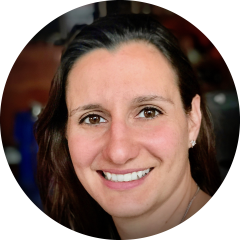Assistant Professor
Degrees: B.Sc., M.Sc., Ph.D.

Office: Canal Building 6202
Phone: +1 (613) 520-2600 Ext. 6239
Email: leila@sce.carleton.ca
Curriculum Vitae:
Department of Systems and Computer Engineering
Faculty of Engineering and Design
Carleton University
1125 Colonel By Drive, Ottawa, ON K1S 5B6, Canada
Short Bio
Understanding how everything works have always been one of my passions since an early age. I would go from asking ‘why the sky is blue?’ to ‘what happens inside of us when we eat food?’. As my years in school passed and my knowledge about different subjects increased, more questions than answers aroused. And this innate curiosity never seemed to cease.
Fast-forward some years, I earned a bachelor’s degree in Medical Physics at the Universidade de São Paulo. The Universidade de São Paulo is one of the most prestigious universities in the world, and there, I had the opportunity to gain invaluable academic and research experiences in both physics and biology. That time further reinforced what I already knew: I seek knowledge from diverse areas and I am instinctively drawn to build bridges across disciplines.
During my years as a master student, I had the opportunity to learn and to work with a variety of optical techniques. For example, during my early years as a graduate student, I have gained extensive experience working with UV-Visible spectroscopy, exploring the suitability of novel chemical compounds for photodynamic therapy (PDT). Later on, during my master studies, I worked in close collaboration with researchers at the Pharmacy Department, applying infrared and fluorescence spectroscopy to characterize how neoplastic cells respond to different treatments.
During the course of my Ph.D. studies, I had the opportunity to work with a state-of-the-art nonlinear optical microscope at the National Research Council in Winnipeg (Canada), developing innovative image analysis tools and assessing characteristic changes that occur within arteries during atherosclerotic plaque development.
Within my Ph.D. work, I started applying texture analysis to extract features from optical images. By extracting statistical parameters from images, I have successfully extracted biochemical features characterizing atherosclerotic plaques within vessels. The tools I applied and developed – for example to calculate the entropy of an image, which can be correlated to how disorganized certain features are – led us to a sound methodology able to accurately classify images based on morphological features of collagen, elastin and lipid-rich structures in arterial vessels.
After completing my Ph.D., which was focused primarily on characterizing cardiovascular diseases, I decided I wanted the opportunity to work in a more biomedical-oriented environment and consequently, address new biological questions.
As a postdoctoral fellow, my focus was on developing methods to reveal and track changes associated with collagen and elastin deposition in respiratory diseases. Structural changes within airways of asthmatic patients – termed airway remodelling – remain unresponsive to existing asthma medications. We know that in asthmatics the airway epithelium is fragile and displays signs of damage; however, we know very little about normal mechanisms of epithelial repair and morphological changes that occur during asthma progression.
At Carleton, my new research platform combines the use of optical microscopy and image analysis with 3D-bioprinting, aiming to address questions related to cellular communication and extracellular matrix repair in abnormal mechano-environments.